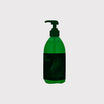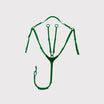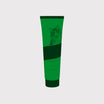Antibiotics are used to fight diseases. Antibiotics only work when the disease is caused by bacteria. Bacteria are in the environment and can be easily transmitted. Almost all bacteria can be passed from your pet to you. One of the main causes of bacterial transmission is not washing your hands (or not washing them properly). Bacteria that are in an egg, on chicken meat or on the skin of a cow can also be transmitted to you.
Diseases caused by the body itself, worms, fungi, or viruses do not respond to antibiotics. Nowadays you hear a lot about antibiotic resistance and the need to be "sparing" with the available antibiotics. This post explains exactly how it works.
How do antibiotics work?
There are different types of bacteria. It would take too long to list them all here. Because there are multiple types of bacteria, multiple types of antibiotics are needed. In general, a given antibiotic is often effective against multiple types of bacteria. It is also the case that a bacterium can be killed by several different antibiotics.
If your pet is ill and your vet has determined that antibiotics are needed, they will be prescribed them. The antibiotics you then give your pet (such as by mouth or in an ointment) kill the bacteria that cause the disease. In the case of a wound, for example, this is the inflammation caused by bacteria. Antibiotics are also often given for pneumonia. There are guidelines for (almost) all animals. These guidelines indicate what type of antibiotic works best for a specific disease or bacteria.
How does resistance come about?
Antibiotics are given at a specific dose and for a specific number of days (a course of treatment). An example would be: half a tablet twice a day for 7 days. It is necessary that antibiotics are given often over several days. This is because the antibiotics have to reach a certain level in the blood before they really take effect. Even in a wound, antibiotics must be administered over a longer period of time. The goal is to kill all disease-causing bacteria. Not every bacterium responds equally quickly to antibiotics. If you give antibiotics now, you'll kill some bacteria. Then when you give it back tomorrow, you're killing some bacteria again. And so it continues. If you stop taking antibiotics too early, not all of the bacteria are dead. The strongest bacteria and those that can resist antibiotics the longest are still alive. These bacteria then have the chance to multiply and cause the disease to break out again. These new bacteria are even more difficult to kill than the earlier ones because only the strongest survived. If this is repeated often enough, the bacteria become resistant. They then no longer respond to the antibiotic at all. Then a stronger antibiotic must be used.
So why be so careful with antibiotics?
These resistant bacteria can also cause illnesses in you. If your pet has a wound and you don't practice proper hygiene, these bacteria can be transmitted to you. For example, if you do not wash your hands properly after rubbing the wound or if you do not put on gloves.
Many of the antibiotics used in animals are also used in humans. Few new antibiotics are found. It is therefore very important that certain medicines remain available to humans. Bacterial infections in humans can be fatal. If antibiotics are not used carefully enough, there will soon only be very strong and resistant bacteria. Antibiotics that can kill bacteria then no longer exist. You then have to live with this infection for the rest of your life.
What can I do against antibiotic resistance?
It is very important to be careful with antibiotics. Always follow your veterinarian's instructions. Don't make yourself a doctor, so don't give less or more antibiotics! Hygienic treatment of your pet's wounds is also very important to prevent the transmission of bacteria. Not every infection requires antibiotics, so always listen to your vet's advice. After all, he/she has a guideline!
In some cases it is necessary for your veterinarian to carry out a sensitivity test. He/she then takes some bacteria from your pet and has a lab determine the best antibiotic. This prevents the wrong antibiotics being used or too few (or too many) antibiotics being used. It is always advisable to have this examination carried out!
This text was translated by a translation machine
 Horse Pharmacy
Horse Pharmacy Rugs
Rugs Care
Care Saddle and Attachments
Saddle and Attachments Leg Protection
Leg Protection Bridles
Bridles Feed
Feed Fly Masks
Fly Masks Saddle Pads
Saddle Pads Headcollars and Ropes
Headcollars and Ropes Bits
Bits Other Disciplines
Other Disciplines Reins and Auxiliary Reins
Reins and Auxiliary Reins Clipping
Clipping Western
Western Eventing
Eventing Foals
Foals Reflection
Reflection Therapy Products
Therapy Products Boots and Shoes
Boots and Shoes Breeches and Belts
Breeches and Belts Tops
Tops Safety
Safety Competition
Competition Heated Clothing
Heated Clothing Gloves
Gloves Socks
Socks Spurs and Attachments
Spurs and Attachments Technology
Technology Whips
Whips Gifts
Gifts Casual Wear
Casual Wear Underwear
Underwear Rider Pharmacy
Rider Pharmacy Bags
Bags Books
Books Laundry supplies
Laundry supplies Jewelry
Jewelry Feed and Waterbowls
Feed and Waterbowls Equipment
Equipment Tack Room
Tack Room Pest Control
Pest Control Arena
Arena Horse Toys
Horse Toys Wheelbarrows
Wheelbarrows Yard
Yard Surveillance
Surveillance Disinfect
Disinfect Washing Area
Washing Area Lighting
Lighting Horse Pasture
Horse Pasture Current Conductors
Current Conductors Pole
Pole Insulators
Insulators Energisers
Energisers Gate Handles
Gate Handles Batteries and Accumulator
Batteries and Accumulator Nets
Nets Grounding
Grounding Tools
Tools Fencing Security
Fencing Security Wolf Defense
Wolf Defense Fencing Sets
Fencing Sets Fence locks
Fence locks Dogs
Dogs Cats
Cats Rodents
Rodents Dogs Pharmacy
Dogs Pharmacy Cats Pharmacy
Cats Pharmacy Rodents Pharmacy
Rodents Pharmacy Cattle Pharmacy
Cattle Pharmacy Poultry Pharmacy
Poultry Pharmacy Veterinary Supplies
Veterinary Supplies Cattle
Cattle Sheep and Goats
Sheep and Goats Poultry
Poultry Heat Lamps
Heat Lamps Calves
Calves Marking
Marking Halters
Halters